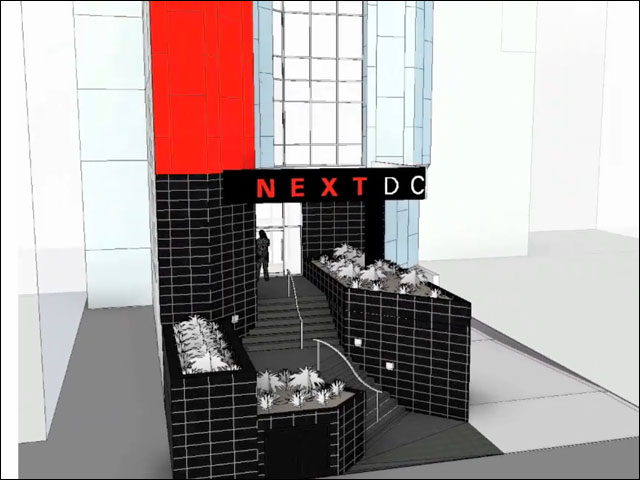Fledgling national datacentre operator NEXTDC said late last week that it was in the final stages of talks to acquire land for a new datacentre site in Sydney’s north, as it progresses its plans to roll out datacentre facilities around the nation.
In a statement, the company — founded last year by PIPE Networks veteran Bevan Slattery and led by a slew of experienced local technology executives — said it had entered into a non-binding heads of agreement to acquire the new site, which it described only as being in “northern Sydney”. A formal contract is expected this week, with the acquisition to completed by the end of April.
“The board can confirm the site is ideally situated adjacent to major infrastructure in a precinct which is recognised as one of Australia’s major technology hubs,” the company said. The major technology centre in northern Sydney is located in North Ryde, with the suburb playing host to major technology companies like Optus, CSC and Microsoft, as well as Macquarie University.
The new Sydney site is expected to provide between 3,000 to 5,000 square metres of datacentre space and to go live in the third quarter of the 2012 calendar year.
Slattery said the company had investigated a series of options in Sydney. “After a comprehensive evaluation of alternatives in Sydney, we are very pleased to have found this highly strategic location for our future Sydney data centre,” he said. “We are now working closely with the vendors, expert consultants and urban utilities to complete due diligence requirements as efficiently and effectively as possible.”
This morning, NEXTDC released an extensive document updating investors about its plans to become “the most recognised, connected and trusted datacentre brand” in Australia and New Zealand.
In the document, the company noted recent moves, such as the appointment of Telstra and Fujitsu veteran Ted Pretty as its executive deputy chairman, the execution of a deal with Harbour MSP which will take up 50 percent of NEXTDC’s initial hosting capacity at November last year, and the fact that the company has a current qualified sales pipeline already showing “over 20 opportunities” for deals.
The company currently has the equivalent of 12 full-time staff — divided up evenly between sales, technical and administration — with four more to commence within the next four weeks.
It is also currently constructing datacentres in a number of other cities, with its first facility in Brisbane slated to go live by 31 May this year, and another datacentre in Melbourne to be ready by November. The company sees the Perth, Canberra and Auckland markets as growth opportunities. It has produced the following video walkthroughs of its Melbourne and Brisbane datacentres — consisting of artist impressions.
NEXTDC’s share price has fluctuated up and down since the company listed on the Australian Stock Exchange in December last year — initially spiking up to $1.85, after the company offered early investors shares for $1 during its prospectus phase. However, since that time the price of the company has come down. It currently sits at $1.53, slightly above its low of $1.45.
Image credit: NEXTDC


Hmmm, hope it doesn’t look like that from the street. Rule one of DCs is not to make it obvious from the street that it’s a DC. Security by obscurity.
That to me looks like an office building actually, the majority of people won’t know who “NextDC” is.
The best stealth DC I’ve seen was built into an old Brake workshop building. They even left the old signage up and let front garden go to weeds. The only give away that there might be something there was an active card reader on the front door.
Powertel in Melbourne is a great example. Built on top of a multi-story car park. The only hint that there’s something above the carpark is that there are seven floors of carpark, and the lift goes to level eight. Even if you go to level eight in the lift, you just emerge into a little room with a phone and a card reader – no other hints.
Soul/TPG/Comindico in North Melbourne is a non-descript red brick building. No card readers, phones, intercom or anything. You have to arrive at the door and phone through to be allowed access.
Verizon in the city actually looks like a prison – and there’s not a single spec of signage on it.
This video is private.
Comments are closed.